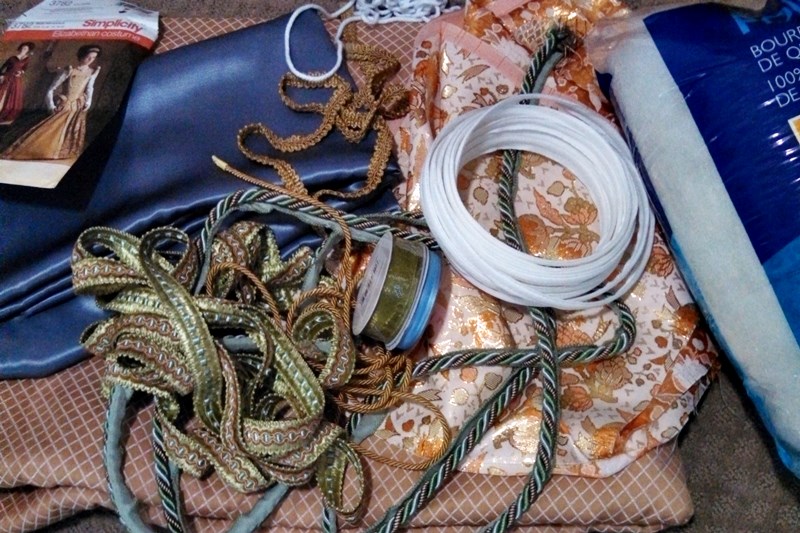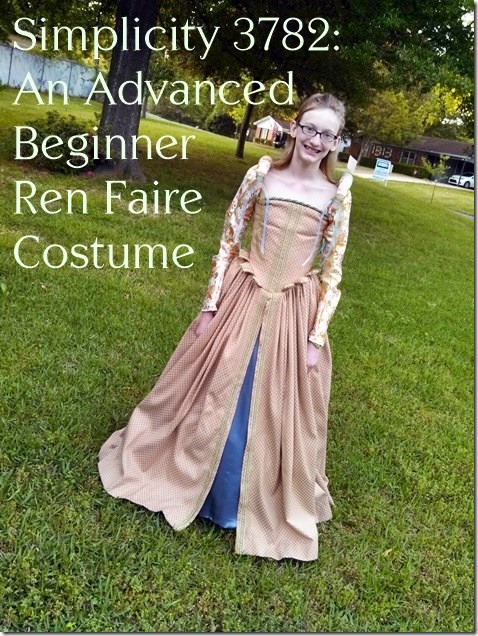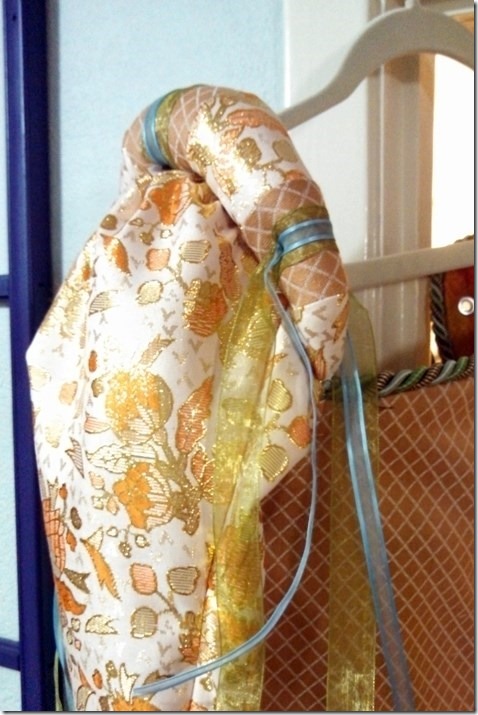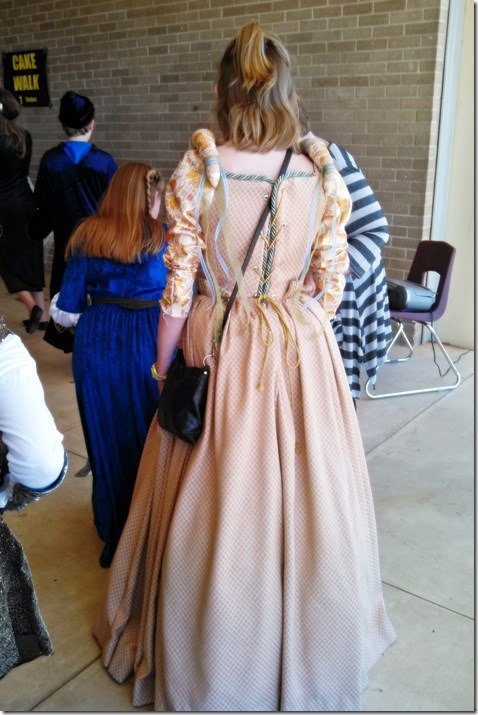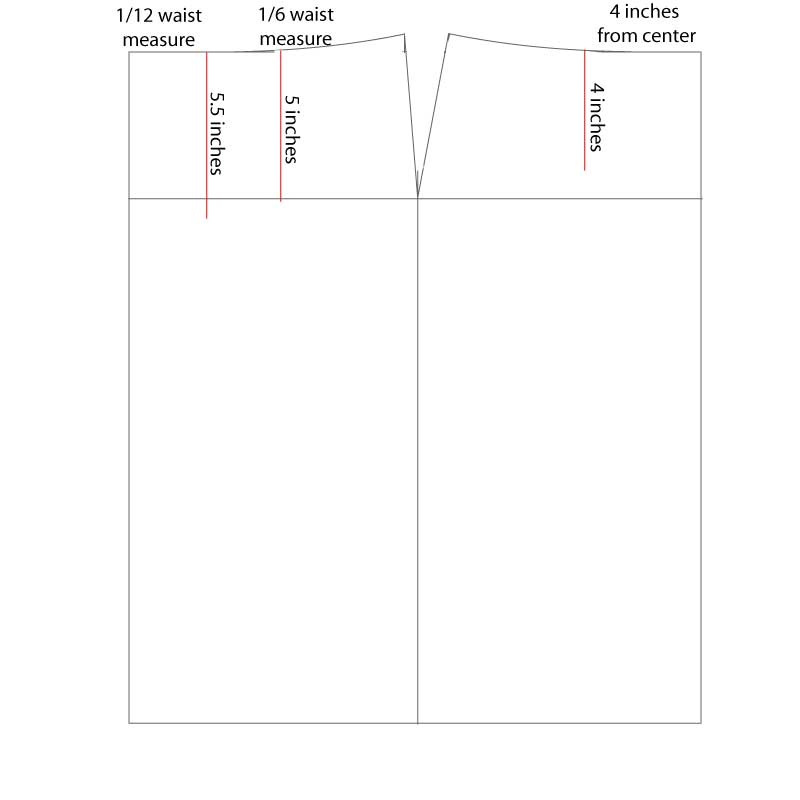We needed a Ren Faire costume. The 6th grader needed to dress as Isabella d’Este, an Italian Renaissance noble woman. This lady: 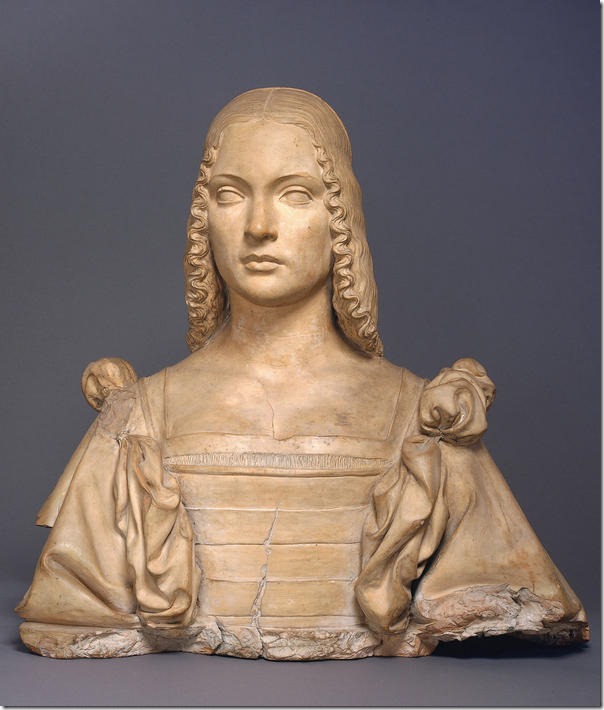
We could have purchased a crushed velour costume that looked like most of the others. But, this Momma can sew!
Here’s my review of Simplicity 3782
Description: Misses’ Elizabethan Costume (dress, underskirt, bum roll)
Sewing level: Advanced beginner (Really. I promise.)
Addie’s favorite element: The shoulder rolls!
My favorite element: The shoulder rolls. (And the bum rolls. It gave the back of this heavy dress the perfect poof.)
Addie’s least favorite element: It was heavy and hot.
My least favorite element: Sewing the skirt to the bodice. Pleats, gathers, boning, heavy fabric. Wasn’t impossible but very difficult.
Biggest change: We really didn’t change anything about the construction of the dress. We did adjust the trim placements to work with our choices. We left off some of the lace on the front for a simpler look but embellished the shoulder rolls with ribbons to mimic a dress we saw in one painting of Isabella d’Este.
Fabric: Addie selected all the fabrics for the dress at one of our local fabric stores. It was fun watching her choose the fabrics because she knew what she wanted, but she’s also frugal like her Momma. She found the shiny brocade first. Knowing it might not wear well, I encouraged her to use it for the sleeves. She stumbled onto the peachy/brown upholstery fabric and loved it. I was thrilled to find it was on clearance for $3.99 ! This meant we could spend more on trims! The underskirt front panel is a crepe back satin and the other panels are white broadcloth. The green/blue/orange trims were chosen to pull all the colors together. If you plan to make this dress, remember that it has no modern closures. Grommets, cordings, and grosgrain ribbon are musts.
Pattern: I followed the written instructions and found no problems with them. The pattern pieces were also easy to use/understand. There were A LOT OF PIECES. The dress went together easily, but beware: upholstery fabrics can get heavy! The shoulder rolls were the part I was most concerned about, but they sewed together nicely. I hand tacked on the ribbon trim that we added. Boning is not scary. I repeat, boning is not scary. The instructions were easy to follow. Essentially, you are just making vertical casings. And don’t try to skip it. The boning gives the structure that Elizabethan costumes are known for. When it came time to attach the skirt to the bodice, I enlisted my hubby’s help. He held the skirt fabrics so that the weight wasn’t working against me. It did take me two tries to match the trims! We borrowed a poof for her to wear under the skirts. And the bum roll is a MUST! It poofed (is that even a word?) the back of the skirt just enough.
Conclusion: Costumes aren’t hard. This one took about 12 hours to complete. It was basically a lot of straight seams. I stitched it up on my little Janome 9-stitch—proof that you don’t need a big fancy machine to make a beautiful garment. The fabrics can get pricey. Watch for sales. Addie made some great choices and we spent less than $100. However, it would be easy to spend upwards of $250 just on the fabric and trims. If you’re looking for cheap and quick, just buy one. If you are looking for a costume that will stand out and be a treasure, try this one.

